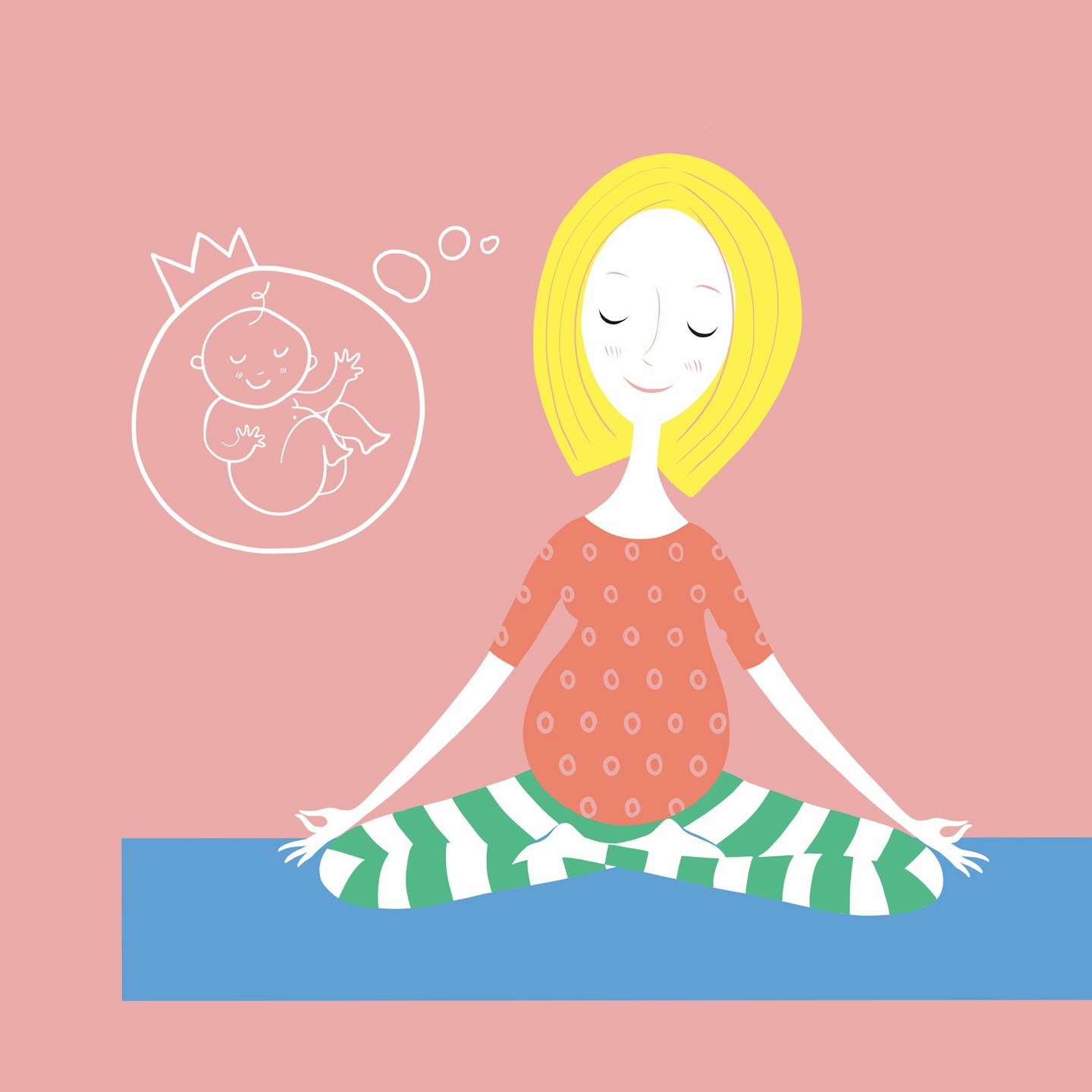Pregnancy is probably the most profound psychological and physical transformation your body will undergo. As well as being a time of joy and delight, pregnancy can also be time of uncertainty and fear, not to mention physical discomfort and emotional adjustment.
Yoga is a great tool to guide you through pregnancy keeping your body and mind in balance as well as a preparing your mentally and physically for labour.
Your body is in constant change as it goes through the different stages of pregnancy and so should be your practice. It’s vitally important to be able to adjust your yoga practice to your ever-changing mind and growing body.
Let’s look at the three key stages women go through in pregnancy when it comes to their yoga practice. Medical professionals generally advise avoiding yoga before 12 to 14 weeks. We suggest three key stages of your yoga practice based on bodily and mental changes as you go through pregnancy.
Stage 1: 14 – 22 weeks
An active flow focusing on creating space in hips and pelvis, prepping for a bigger belly and shifting awareness to changes in the body.

At 14 weeks, nausea usually subsides and energy levels return. You can feel more energetic than ever before and although your body gradually starts changing, you are probably keen to move. A relatively dynamic flow practice for the next six to eight weeks will allow you to embrace the return of your energy. You may not notice a huge difference in your body shape, but certain modifications are needed to accommodate the growing baby.
At this stage you have a little surge of energy, and nausea may be subsiding, your pelvis is shifting slightly so we make small adjustments such as standing with your feet hip-width apart rather than together. You can definitely feel the changes in your body, but you don't have a big belly yet, especially if it's your first child, so you are not really hindered in your movement. Stage One is a flow to embrace the energy that returns after the first 12 weeks, which may have been a pretty challenging time hormonally. If, for any reason, you feel this stage is too much, you can simply move to Stage Two.
Stage 2: 22-32 weeks
A slower, increasingly mindful flow but with further modifications to take into account a growing belly and tightness in the shoulders and back.

You begin to feel a little heavier. You can still do a flow class but in much more mindful and slower mode. In your practice, you’ll need to be more observant and not push yourself while stretching, twisting and back bending. The focus is on key areas such as shoulders, back and pelvic region. Poses are modified to take into account your growing belly and you’ll start using props to support certain poses.
It's still a flow but it's a little slower - you are moving in a more mindful way. Your growing belly and boobs mean that all the weight is now forward and as a result your shoulders and back can start to tighten. You hunch more and the 'duck waddle' starts to happen. The lower back is doing a lot more so we focus on shoulder opening and back strengthening with bolsters and blocks to support you.
Stage 3: 32 weeks onwards
A grounded slow flow, focusing on breathing and connecting to the baby, prepping mentally for birth.

Preparing for birth, both mentally and physically is the key at this time with a grounded, slow flow and focus inwards. Deep, nurturing breathing, tension releasing movements and mind-calming meditation help you prepare for the birth. Although you can (and should, if you have no medical issues) still move at this stage, setting intentions, sending love and devotion to your baby, visualizing the new life inside you and learning to keep calm with breathing are top priority.
Your belly is pretty big, you are in your final weeks but you are still not completely static. Your energy levels start to drop again at this point. Stage Three is much more internal; we focus more on breathing and connecting to your baby with lots of hands-on belly, affirmations and setting intentions. By this point, the baby is kicking and you really feel like it's happening. The ligaments are getting softer. We are especially careful with the stretches at this point, because you can overstretch.
Unless you are an experienced practitioner we recommend you practice pregnancy yoga only with qualified instructor. Even under supervision do listen to your body as you will feel different from day to day and from class to a class.
Do bear in mind the following while practicing:
-
Do not compress the abdominal or pelvis
-
Avoid bouncing
-
Don’t overstretch
-
Avoid backbends, except for modified Cobra and Bridge
-
Avoid deep unsupported squats in the third trimester
-
Never allow breathing to become strained
-
Reduce the width between feet when doing wide legged postures
-
No unmodified inversions unless experienced
Pommama is a network of pregnancy yoga teachers in Central London bringing specialist antenatal yoga to you, wherever you are - at home, in the office, at any time of day. At Pommama, our aim is to help make your journey through pregnancy life-enhancing and enjoyable. For more information and tips please visit www.pommama.com
